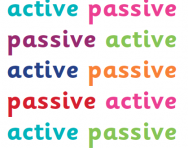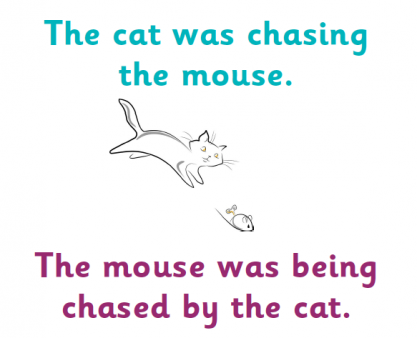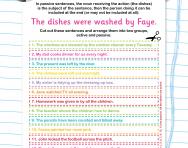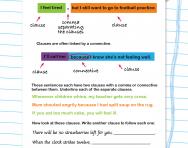What are active and passive sentences?

What are active and passive sentences?
A sentence is written in active voice when the subject of the sentence is performing the action.
A sentence is written in passive voice when the subject of the sentence has something done to it by someone or something.
For example:
Active voice: The cat was chasing the mouse.
In this sentence, 'the cat' is the subject, 'was chasing' is the verb and 'the mouse' is the object.
Passive voice: The mouse was being chased by the cat.
In this sentence 'the mouse' has become the subject which is having something done to it by the cat.


Download Fantastic FREE Grammar Resources!
- Perfect Punctuation Workbook
- Great Grammar Games Pack
- PLUS 100s of other grammar resources
How are the active and passive voice taught and used?
People tend to use the active voice rather than the passive voice when they are writing, but the passive voice is often used for particular reasons. For example:
Here, the person who has done the graffiti is not known, so the sentence is written in the passive voice.
Here, it is not important who counted the votes, but instead the fact that they have been counted is important. You could also say that the most important thing in the sentence is the votes, which is why they are mentioned first in the sentence, rather than last as they would be would be in the active voice ('People counted the votes').
Year 6 children learn about the active and passive voice as part of their work on English grammar. They will be shown how to use it in their writing as a way of varying sentence structure. They may also be tested on passive sentences in the KS2 Grammar, Punctuation and Spelling test which Y6 children sit as part of their KS2 English SATs.

Give your child a headstart
- FREE articles & expert information
- FREE resources & activities
- FREE homework help









